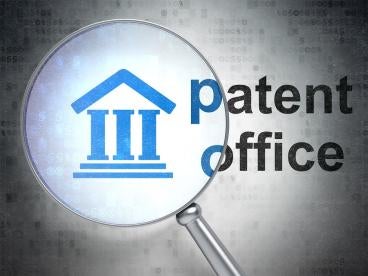Practitioners should be aware that challenging the PTAB’s decision to deny institution of an IPR got even harder after a recent Federal Circuit decision. While the Supreme Court has already made clear that challenges to denial of an institution decision can only happen in very specific circumstances, the Federal Circuit’s recent precedential decision in In re: Power Integrations, Inc., 2018-144, 2018-145, 2018-146, 2018-147 (Fed. Cir. Aug. 16, 2018) gives Cuozzo Speed Technologies, LLC v. Lee, 136 S. Ct. 2131 (2016) even more bite.
Background
Power Integrations filed four different IPR’s, seeking to invalidate three different patents. Power Integrations’ petitions relied on three different pieces of prior art. The Patent Trial and Appeal Board (“the Board”) reviewed each of the petitions and denied institution of each. The Board denied institution because it determined that none of the art Power Integrations relied on qualified as a printed publication. Finding the predicate requirement for prior art not met, the Board denied institution without further analysis of the merits of each of Power Integrations’ petitions.
The References
As recounted by the Federal Circuit, the first piece of prior art was a paper prepared for a conference held in Virginia in 1993. To support the public availability of the paper, Power Integrations submitted a declaration of an attendee of the conference which stated that the attendee has attended the conference and obtained a copy of the paper at the conference. The Board determined that Power Integrations failed to demonstrate that the paper was provided without restrictions and that the attendee was a person of ordinary skill in the art.
The second piece of prior art was a datasheet for one of Power Integrations’ own products. The data sheet contained a notation saying “7/91” on the document. To further support the availability of the data sheet, Power Integrations also included a declaration from a person with knowledge of the data sheet who stated that the data sheet was published, made available and distributed to the public in July of 1991. The Board determined that the data sheet was not a printed publication because there were no indicia of public accessibility on the document such as a mailing stamp and Power Integrations did not explain how a member of the public could have obtained a copy of the document. In addition, the Board faulted Power Integrations declarant for failing to provide evidence of the public availability or an indication that Power Integrations had a standard practice of making such references available.
The third piece of prior art was a third-party data sheet appearing to be an excerpt from a handbook dated 1995-1996 and containing a copyright notice stating that it was printed in the U.S.A. in 1995. Power Integrations did not include a declaration relating to this reference. The Board faulted Power Integrations for failing to provide any evidence of dissemination or how one of skill in the art could have located the reference. In addition, the Board explained Power Integrations never relied on the copyright date for public availability in its Petition.
Because the Board determined that Petitioner had not demonstrated that any of these references qualified as a printed publication, the Board denied institution.
Power Integrations’ Appeal
In Cuozzo, the Supreme Court held that the AIA bars review of the Board’s decision to deny institution of an IPR except in rare cases such as “whether the appeal implicates constitutional questions or presents ‘other questions of interpretation that reach, in terms of scope and impact, well beyond’ section 314(d).” In re Power Integrations, at 4-5.
In light of Cuozzo, Power Integration could not directly appeal the denial of institution. Thus, Power Integration sought a mandamus to force the Board to provide a more detailed explanation for the basis of its denial. The Federal Circuit, however, explained that while mandamus is not necessarily foreclosed in all cases of denials from institutions of IPRs, Power Integrations’ requests were an attempt to perform an end-run around Cuozzo and therefore had to be rejected.
The Federal Circuit noted that “to obtain the remedy of mandamus, a party must show that its right to issuance of the writ is ‘clear and indisputable,’ and that there are no adequate alternative legal channels through which it may obtain that relief. Moreover, ‘even if the first two prerequisites have been met, the issuing court, in the exercise of its discretion, must be satisfied that the writ is appropriate under the circumstances.’” In re Power Integrations, at 6 (citing Cheney v. U.S. Dist. Court for the Dist. of Columbia, 542 U.S. 367, 380–81 (2004)).
The Federal Circuit concluded: “A disappointed petitioner cannot by-pass the statutory bar on appellate review simply by directing its challenge to asserted procedural irregularities rather than to the substance of the non-institution ruling.” Id. at 9-10.
Take Aways
Practitioners should be aware that collateral attempts to appeal a denial to institute an IPR will be difficult to succeed on. From a cost perspective, if an IPR is denied, it may be better for a Petitioner to focus on raising the art at the trial court level than attempting to pursue what could be a fruitless effort to appeal.
But more than simply acknowledging the proverbial “closing door” with respect to appealing a denial, Practitioners should be aware of the Board’s hyper attentive focus on putting Petitioner’s to their proofs to establish a printed publication. Practitioners should make sure that each every “i” and “t” gets dotted and crossed. Each element of the printed publication test should be set forth in the Petition. Moreover, any declarant should provide enough information to allow the Board to conclude that the printed publication requirements are met including public availability, no limitation on the use of the information, and an indication of how one of skill in the art would have been able to access the information.



 />i
/>i

